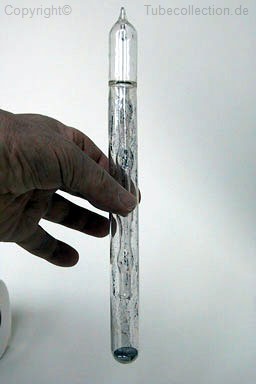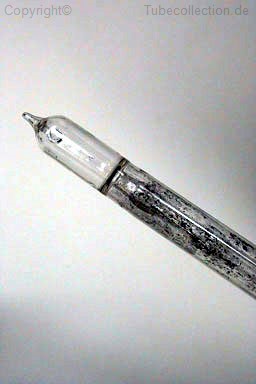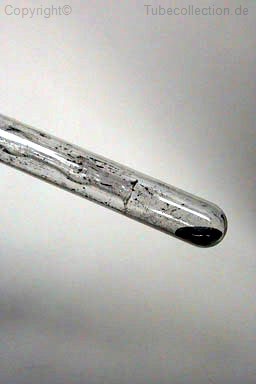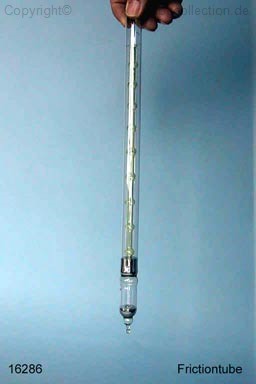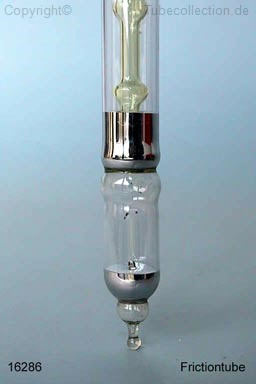|
Mit der Röhre wird demonstriert, dass die Reibung des Quecksilbers an der Wand des Glases ein elektrisches Glühen erzeugt. Man hält die Röhre waagerecht mit leichter Neigung und lässt das Quecksilber zum anderen Ende fließen. Der Raum muss dabei völlig abgedunkelt sein. Ziel war es, die Ähnlichkeit mit dem Leuchten von Phosphor in der Dunkelheit zu demonstrieren. Deshalb wurde das Experiment auch "Elektrophosphor-Experiment" bekannt. Das Leuchten wurde erstmals von Jean Picard im Jahre 1676 entdeckt und dann als elektrische Erscheinung von Francis Hauksbee Senior im Jahre 1706 vorgeführt. Eine solche Röhre wurde in der gestoppten Pressler-Auktion von Christies in 1988 angeboten. Die Auktion wurde gestoppt, nachdem man festgestellt hatte, dass ehemalige Mitarbeiter aus der alten Pressler-Fabrik aus noch alten Teilen Röhren nachgebaut hatten. Trotzdem hat die Röhre einen gewissen Seltenheitswert und auch der Christies Katalog, der heute unter Sammlern recht begehrt und kaum mehr zu beschaffen ist. Die Röhre war dort in LOS 181 auf Seite 46 zu sehen. Inzwischen habe ich noch eine weitere. längere Röhre bekommen. |
|
